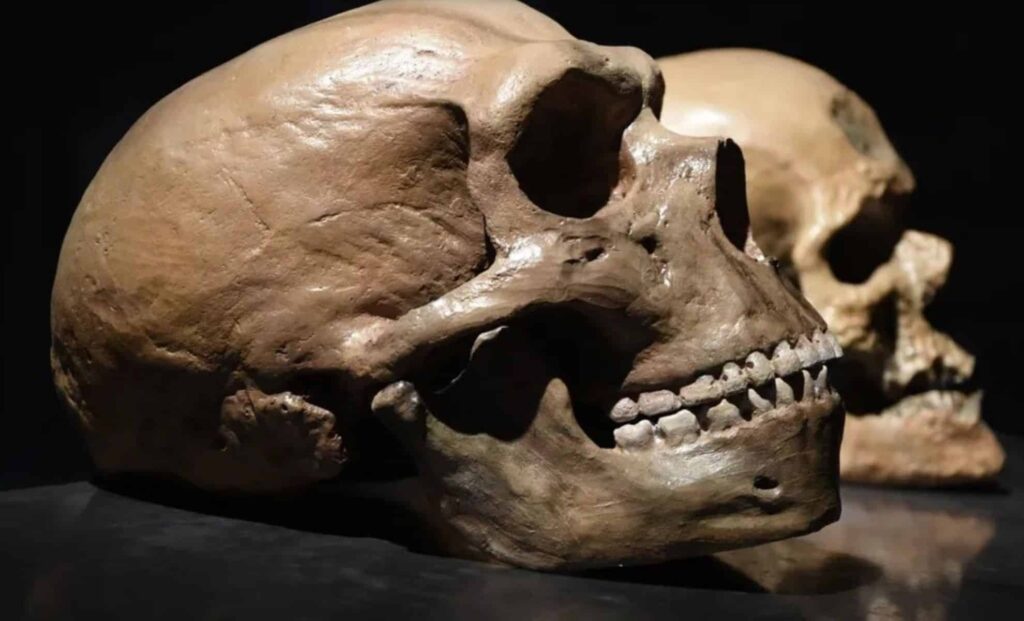
A breakthrough in human evolutionary research has unveiled the precise location where Homo sapiens and Neanderthals first crossed paths. Contrary to previous assumptions that placed this encounter in the caves of Europe, the new findings point to the Zagros Mountains—a remote yet pivotal region straddling modern-day Iran, Iraq, and Turkey—as the initial meeting ground.
For centuries, the exact site of this significant encounter remained a mystery. However, a groundbreaking genetic and archaeological study, recently published in the journal Nature, has shed light on this crucial chapter of our shared evolutionary history.
The Zagros Mountains: A Crossroads for Ancient Humans
The Zagros Mountains stretch across a vast expanse, forming a natural barrier between the cooler northern regions of the continent and the warmer climates to the south. This mountainous range, often overlooked by the general public, served as a vital corridor for human migration during the Pleistocene era, approximately 60,000 to 40,000 years ago.
As climatic conditions shifted, early human populations moved across the region in response to changing environments. Neanderthals, already established in Europe and Western Asia, began migrating southeast. Meanwhile, Homo sapiens, emerging from Africa, continued their northward expansion. In the rugged terrain of the Zagros, the paths of these two species converged, marking a critical juncture in human evolution.
Genetic Traces of an Ancient Legacy
This encounter was not merely a fleeting one; it likely involved interbreeding. Modern genetic analyses confirm that between 1% and 4% of the DNA of every non-African human today is derived from Neanderthals. The significance of this genetic overlap cannot be understated.
“This ancient hybridization has shaped much of our biology, influencing our immune system, sensitivity to pain, and even our response to COVID-19,” experts note. Neanderthal DNA is present in key genetic markers that play roles in disease susceptibility and other physical traits.
These revelations are no longer hypothetical but are recognized as fundamental aspects of the modern human genome.
A Meeting Ground for Two Human Species
This new study challenges long-held assumptions about the separation between the two species. Rather than evolving in isolation, Homo sapiens and Neanderthals shared a more complex and intertwined history. The Zagros Mountains, far from being just a backdrop to this interaction, acted as a central hub for genetic exchange.
Archaeologists have uncovered numerous ancient sites in the region, revealing evidence that these two groups did not simply coexist but intermingled. The findings suggest multiple waves of contact and reproduction, resulting in an exchange that contributed to the genetic makeup of all humans today.
Climate and Geography: Key Players in Human Evolution
The Zagros Mountains were more than just a meeting place for two species. The region’s geography and climate played a significant role in facilitating the interaction. During the Pleistocene, the area offered a blend of environmental conditions suitable for both species.
The topography of the region, with its varied landscapes and elevation changes, provided a diversity of habitats. This allowed Neanderthals and Homo sapiens to not only coexist but to thrive in the same environment. Additionally, the climate played a critical role in shaping their migration patterns, guiding both groups to the mountains as they moved in response to changing global weather patterns.
These findings are not only groundbreaking for the field of paleontology but also offer a fresh perspective on the role of climate and geography in shaping the distribution and interactions of ancient human species. The Zagros region, once thought of as a marginal area, is now recognized as a central point of convergence in the early history of humankind.
As researchers continue to explore this region, further discoveries may yet redefine our understanding of human evolution, providing deeper insights into how ancient climates and landscapes influenced the paths of our ancestors.







